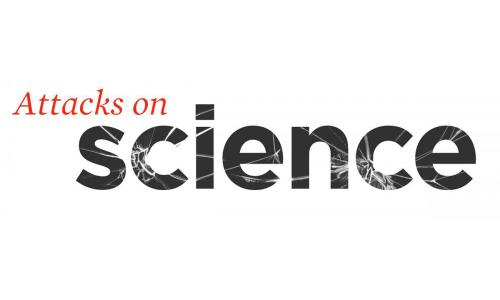NOTE: The following is one of a series of case studies produced by the Union of Concerned Scientists' Scientific Integrity Program between 2004 and 2010 to document the abuses highlighted in our 2004 report, Scientific Integrity in Policy Making.
In April 2008, the Environmental Protection Agency (EPA) announced a new review process granting greater control over a key public chemical database to other federal agencies.1 The changes allow agencies, many with clear conflicts of interest such as the Department of Defense (DOD), Department of Energy, the National Aeronautics and Space Administration, and the White House Office of Management and Budget (OMB), to delay scientific assessments of the toxicological and cancerous effects of chemicals into a database known as the Integrated Risk Information System (IRIS).2
IRIS provides public access to toxicology profiles of more than 500 chemicals, and these risk assessments are often used to create public health standards for chemical exposure. EPA's new process of updating these profiles will allow these federal agencies, the same ones responsible for cleaning up contaminated areas, to designate some chemicals as "mission critical" and require additional or modified studies. This additional analysis could add years of delay to the release or updating of information on chemicals that pose a significant threat to public health.3
The changes are the result of pressures from NASA, DOE, and DOD over the agency's approach to assessing the health risks of the chemicals perchlorate and trichloroethylene.4 Comments from the Office of the Under Secretary of Defense from Jun 29, 2005 show that the DOD was extremely critical of the EPA's early attempts to update its IRIS process. DOD protested that in the proposed process, "EPA makes critical decisions on which chemicals to update with no option for interagency input." DOD's comments consistently look to limit public participation in favor of increased and earlier interagency participation. DOD also advocated for a greatly increased role for the Office of Management and Budget, and more built in "iterative" processes at every stage of the review process.5
The new process appears to give DOD much of what it asked for. EPA now involves these other agencies from the very beginning of the review process, including them in meetings discussing which chemicals to review, allowing them to sponsor or perform their own research on the chemicals, and allowing them to designate a chemical as "mission critical," which can add an additional 540 days of new studies.6
Furthermore, EPA cedes the interagency review process to the authority of OMB once the draft toxicological review process has been completed. Among the authorities of OMB is the distribution of the external peer review "charge" questions to the interagency group for their review. This gives the interagency group the opportunity to shape the questions for external peer review, and hence the review itself.7 An independent scientist (name withheld by request) reported to the Union of Concerned Scientists that the OMB modified the charge to one independent review panel by removing questions asking whether the risk assessment adequately addressed public health risks, and adding questions asking if the EPA had gone too far in its risk assessment. The scientist stated that OMB's substitution "served to downplay the risk posed by the chemical in question."8
As noted above, one of the chemicals under review by IRIS that prompted the formation of a formal interagency review process was perchlorate. Information from IRIS on the toxicity of perchlorate, a component of rocket fuel detected nationally in drinking water, breast milk, and produce, could mean that the DOD and its contractors are liable for potentially billions of dollars in cleanup costs. The DOD has long sought to weaken any scientific standard that would mandate cleanup of perchlorate contamination.9 After the EPA's initial 2002 perchlorate assessment, the DOD criticized the EPA's science, and lobbied to have the National Academies review the subject. Air Force Col. Daniel Rogers linked the outcome of scientific deliberations to national security, claiming before the resulting National Academies panel that "every additional layer of science-policy precaution embedded into this risk assessment comes at the expense of the [Defense] Department's ability to acquire and test propulsion and weapons systems."10 The National Academies panel eventually proposed a perchlorate standard weaker than the EPA's initial risk assessment, and the EPA has not yet finalized a drinking water standard for perchlorate.
In addition to the new IRIS review process, the EPA has proposed that it no longer include numerical assessments of toxicity in its draft reports on IRIS chemicals. This would be a major blow to the public and other regulatory agencies, which often rely on these preliminary safety thresholds for information on these chemicals while waiting for the final reports—which can take several years.11
The EPA's new IRIS process gives federal agencies that are part of the regulated community a formal role in the chemical review process of a critical database that the public uses to determine their risks from potentially dangerous chemicals. The process adds layers of review that can add up to six years of federal government review (this excludes any additional time added if the chemical is later sent to the National Academies for review, as was the case with perchlorate).12
The DOD, DOE, NASA, and the OMB have successfully pressured EPA into institutionalizing second-guessing of EPA science by conflicted third parties. Exempting the DOD and other agencies from the cleanup of environmental pollution may sometimes be in the nation's best interest, but such an exemption should be an explicit policy decision and not rely on manipulating scientific data for support. IRIS is a scientific database that serves as a source of objective information for protecting public health and the environment, including the development of regulations, enforcement of environmental laws, and assessment of environmental cleanup efforts.
Update: On May 21, 2009, EPA Administrator Lisa Jackson announced changes to the IRIS review process,13 overturning much of the Bush administration process.14 Following the announced improvements to the IRIS process, the U.S. House of Representatives Subcommittee on Investigations and Oversight, chaired by Representative Brad Miller (D-NC), released a report describing cases in which the OMB edited IRIS assessments during the Bush administration.15
1. EPA. EPA Announces Improvements to IRIS Process. April 10, 2008. Accessed April 25, 2008.
2. EPA. IRIS Process (2008 Update). Accessed April 25, 2008
3. EPA. EPA's Integrated Risk Information System, Assessment Development Procedures. Accessed April 25, 2008.
4. Inside EPA. GAO inquiry prepares to focus on EPA delay of new risk review plan. Sept 21, 2007.
5. Office of the Under Secretary of Defense. Letter to Dr. Pruess, Director of the National Center for Environmental Assessment. June 29, 2005. Obtained from Inside EPA.
6. IRIS Assessment Development Procedures.
7. IRIS Assessment Development Procedures.
8. Anonymous EPA scientist. Interview for the Union of Concerned Scientists report, Interference at the EPA: Science and Politics at the U.S. Environmental Protection Agency. 2008.
9. Sass. J. 2004. U.S. Department of Defense and White House working together to avoid cleanup and liability for perchlorate pollution. International Journal of Occupational and Environmental Health (abstract). 10:330-334.
10. Hogue, C. 2003. Scuffle over perchlorate: NAS panel hears agencies' arguments against, for EPA draft risk assessment. Chemical & Engineering News. November 3.
11. Inside EPA. 2007. Administration may halt EPA use of numerical values in draft risk studies. December 14.
12. IRIS Assessment Development Procedures.
13. U.S. Environmental Protection Agency. 2009. "EPA Announces New IRIS Assessment Development Process." May 21.
14. U.S. Environmental Protection Agency, National Center for Environmental Assessment. 2009. "IRIS Process (2009 Update)." May.
15. U.S. House of Representatives Subcommittee on Investigations and Oversight, Committee on Science and Technology. 2009. "Nipping IRIS in the Bud: Suppression of Environmental Science by the Bush Administration's Office of Management and Budget." June 11.




